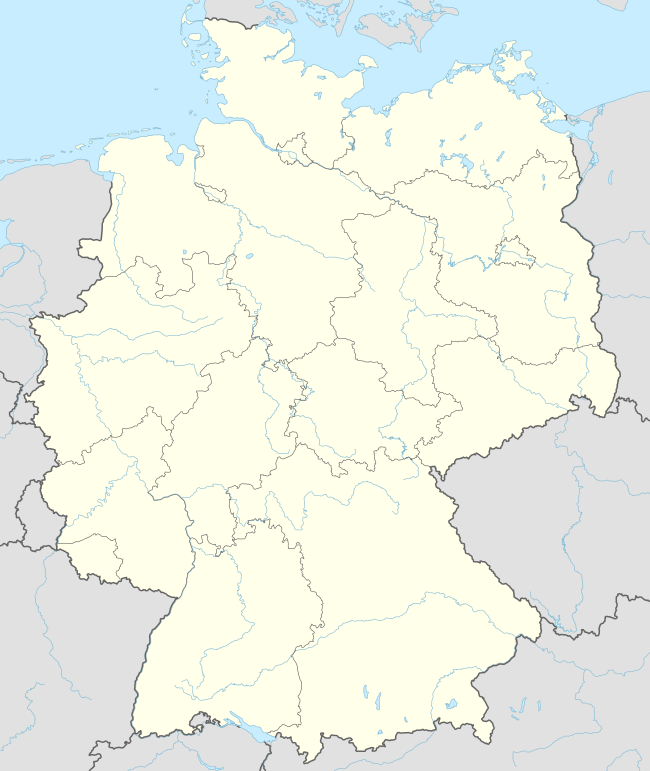Steglitz
| Steglitz | ||
|---|---|---|
| Quarter of Berlin | ||
|
Town Hall | ||
| ||
 Steglitz | ||
Location of Steglitz in Steglitz-Zehlendorf and Berlin  | ||
| Coordinates: 52°28′00″N 13°20′00″E / 52.46667°N 13.33333°ECoordinates: 52°28′00″N 13°20′00″E / 52.46667°N 13.33333°E | ||
| Country | Germany | |
| State | Berlin | |
| City | Berlin | |
| Borough | Steglitz-Zehlendorf | |
| Founded | 1792 | |
| Area | ||
| • Total | 6.79 km2 (2.62 sq mi) | |
| Population (2008-06-30) | ||
| • Total | 70,555 | |
| • Density | 10,000/km2 (27,000/sq mi) | |
| Time zone | CET/CEST (UTC+1/+2) | |
| Postal codes | (nr. 0601) 12157, 12161, 12163, 12165, 12167, 12169 | |
| Vehicle registration | B | |
Steglitz is a locality of the Steglitz-Zehlendorf borough in the south-west of Berlin, the capital of Germany. The locality also includes the neighbourhood of Südende.
History


While one Knight Henricus of Steglitz was already mentioned in an 1197 deed, the village of Steglitz was first mentioned in the 1375 Landbuch of Emperor Charles IV, at this time also ruler of the Brandenburg Electorate.
Steglitz witnessed the construction of the first paved Prussian country road, in 1792. The former village profited largely from its location on the Imperial Highway Reichsstraße 1, today Bundesstraße 1, which follows a trading route that dates back to the Middle Ages. The old Reichsstraße stretched from the far West of Germany through Aachen and Cologne to Berlin, then continued on eastward to end some two hundred miles northeast of Königsberg in East Prussia. The village of Steglitz was also boosted significantly with the construction of the Stammbahn line of the Prussian state railways in 1838. This was the first railroad in Prussia and ran between Berlin and Potsdam. The Steglitz area was included in the southern line of Berlin's rail and transit systems from around 1850.
The southwestern surroundings of Berlin saw considerable change in the second half of the 19th century when luxurious residential areas were developed in the neighboring villages of Lichterfelde and later Dahlem. Lichterfelde West and East, founded by the entrepreneur Johann von Carstenn were developed as so called Villenkolonien, settlements made up entirely of mansions or villas. In the east the settlement of Südende (South End) was founded in 1873. In Steglitz proper a major shopping area developed around the Schloßstraße, catering also to the wealthy villages of Lichterfelde and Dahlem. In 1901 the first Wandervogel youth group was founded in the basement of the Steglitz town hall.
Steglitz was incorporated into the city of Greater Berlin in 1920 together with neighboring villages. From 1920 to 2000 the administrative district IX was called Bezirk Steglitz. During the time of the Berlin Wall Steglitz formed part of the American Sector. In Berlin's 2001 administrative reform the Berlin southwestern area was united in the newly created borough of Steglitz-Zehlendorf, with its expensive residential developments today the most affluent of the twelve Berlin boroughs.
Points of interest
- Gutshaus Steglitz (Steglitz Manor), a Neoclassical building designed by David Gilly in 1801, which since 1921 housed the small Schlossparktheater, one of the former Berlin state theatres, that nevertheless finally closed in 2006
- The Schloßstraße, the second largest shopping area in Berlin after Kurfürstendamm and Tauentzienstraße, including Forum Steglitz, one of Germany's first shopping malls opened in 1970
- Neo-Gothic Steglitz town hall, erected in 1898
- Lutheran Matthäuskirche, built in 1880
- Catholic Rosary church from 1900, which received the title of a basilica in 1950
- The notorious Steglitzer Kreisel, a 119 m (390 ft) highrise erected between 1968 and 1980, designed by architect Sigrid Kressmann-Zschach. Before the construction was finished the developing company became insolvent in 1974, leaving a ruin in Steglitz' centre until the works were resumed in 1977. To avoid further vacancy the borough's administration moved in, but had to leave the building in 2007 due to a contamination with asbestos. The building includes the Berlin U-Bahn station Rathaus Steglitz, a bus station and a multi-storey car park
- The Bierpinsel ("Beer Brush"), a tavern in a tower on Schlossstraße with an interesting architectural style built in 1976
- Villenkolonie Lichterfelde West, historical district of 19th century mansion houses and cobbled streets in the adjacent Lichterfelde district
- Titania-Palast, a large cinema erected in 1928 in New Objectivity style. On May 26, 1945 it was the site of the first concert of the Berlin Philharmonic orchestra after World War II. On June 6, 1951 it saw the opening ceremony of the first Berlin International Film Festival
- The Fichtenberg hill, highest point in Steglitz, 68 m (223 ft).
- The Grundschule am Insulaner is an elementary and middle school near Südende.
- Die Spiegelwand - Mirrored Wall - is a Holocaust Memorial with the names and addresses of 1700 Jews in the Steglitz area who were deported and murdered in Nazi concentration camps. Take either U-Bahn or S-Bahn to Rathaus-Steglitz. The Memorial is right across the street from the Station.
- McNair Barracks - Prior to the withdrawal of U.S. forces from Berlin following reunification, three infantry battalions and a 155mm artillery battery were located at McNair Barracks in Lichterfelde. During readiness alerts, U.S. units would form up on the 4. Juli Platz between the kaserne and Parkfriedhof Lichterfelde, then move to their tactical assembly areas.
Transportation
Steglitz is served by the Berlin S-Bahn line S1 at the stations Feuerbachstraße and Rathaus Steglitz as well as by the S25 at Südende. U-Bahn connection to the inner city is provided by the U9 line with the stations Walther-Schreiber-Platz, Schloßstraße and Rathaus Steglitz.


